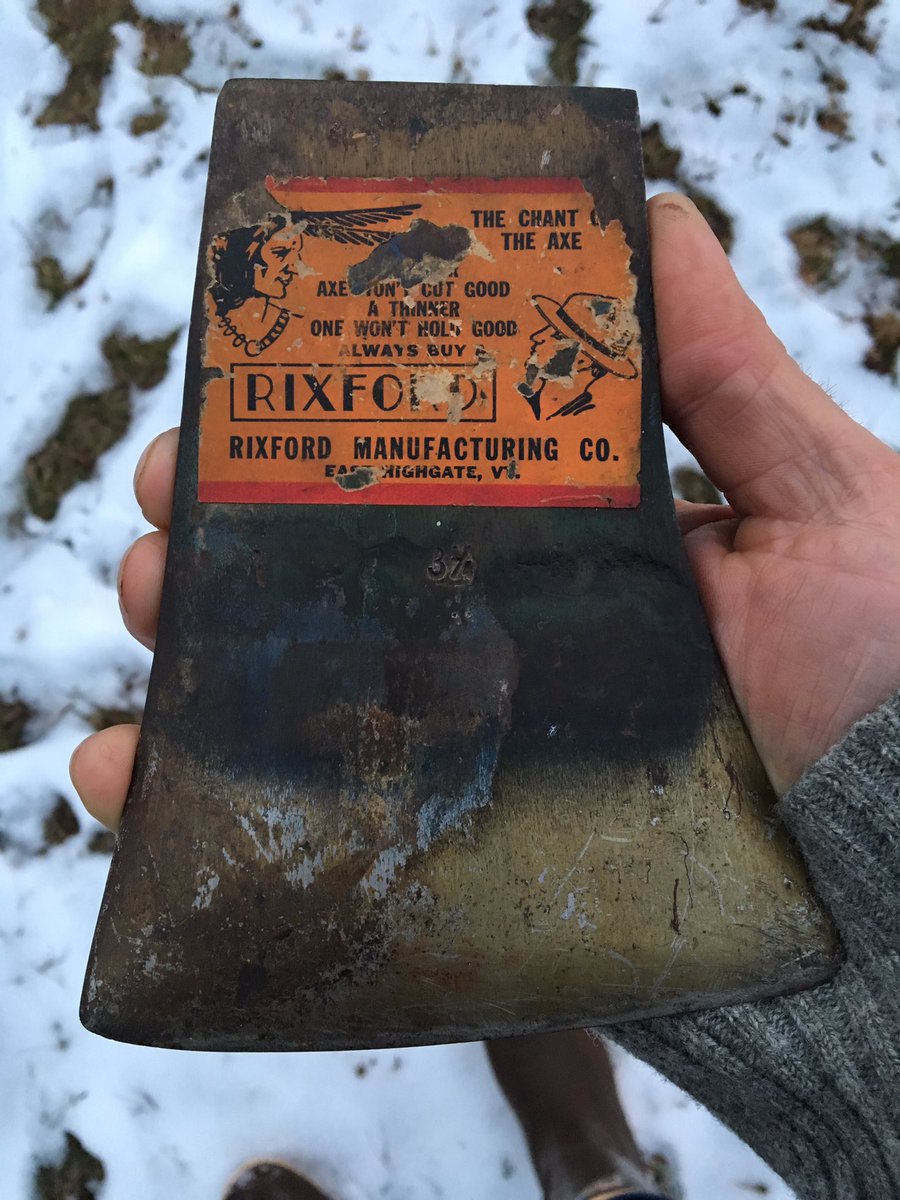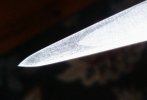- Joined
- Jan 30, 2011
- Messages
- 82
After seeing my first attempt at customizing an axe, A friend of mine gave me one he's had sitting around for a long time. Admitting that he's pounded way more horse shoe pegs than chopped wood it's well beaten on the poll. It's folded over to the point you almost couldn't see the marking R44 Rixford. A 3 towards the center indicating poundage.
Some quick google-fu shows it's a quality axe made in 1944. Well, an axe from a quality maker made in 1944 anyway. Both my friend and his son echoed one another by saying it's likely substandard metal due to all the "good stuff" going towards the war effort in 1944.
My question before taking a file to this thing. Does anyone know off hand if it IS crappy metal or is it possibly as good as the rest of Rixford fare..?
Secondly, as stated, the poll is folded over to the point that the marking will disappear if I clean it up. Is there any reason, besides being made during the war that I shouldn't customize it?
As an aside, the handle is in awesome shape so I'm going to try and rehang it on the original.
Thanks for any info you might have..
Some quick google-fu shows it's a quality axe made in 1944. Well, an axe from a quality maker made in 1944 anyway. Both my friend and his son echoed one another by saying it's likely substandard metal due to all the "good stuff" going towards the war effort in 1944.
My question before taking a file to this thing. Does anyone know off hand if it IS crappy metal or is it possibly as good as the rest of Rixford fare..?
Secondly, as stated, the poll is folded over to the point that the marking will disappear if I clean it up. Is there any reason, besides being made during the war that I shouldn't customize it?
As an aside, the handle is in awesome shape so I'm going to try and rehang it on the original.
Thanks for any info you might have..



